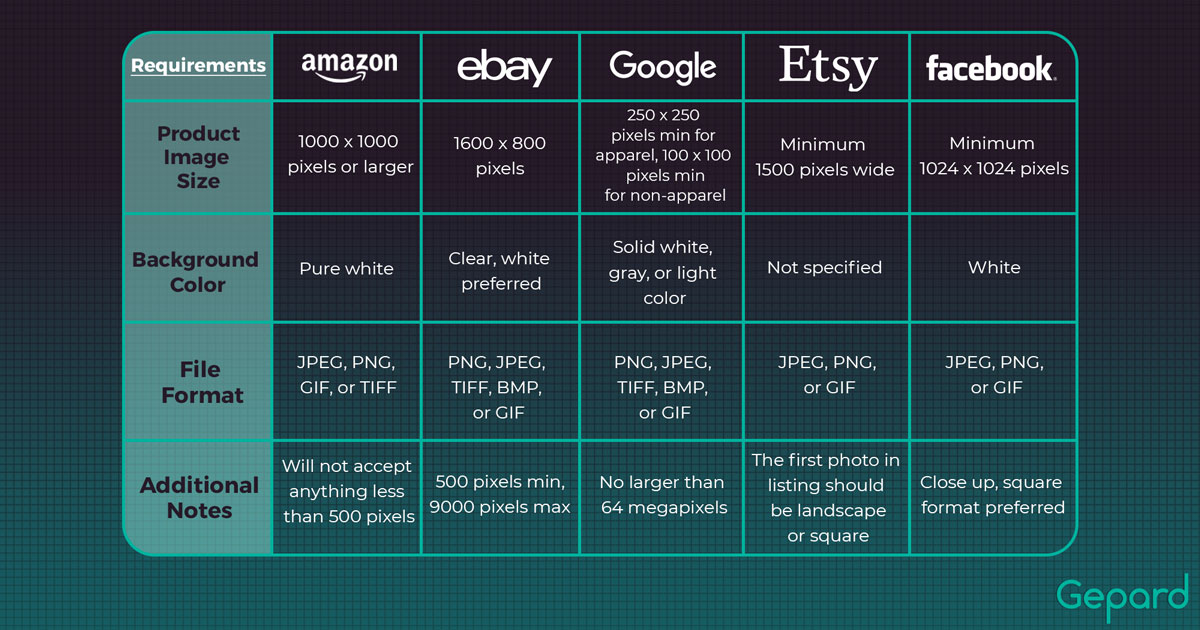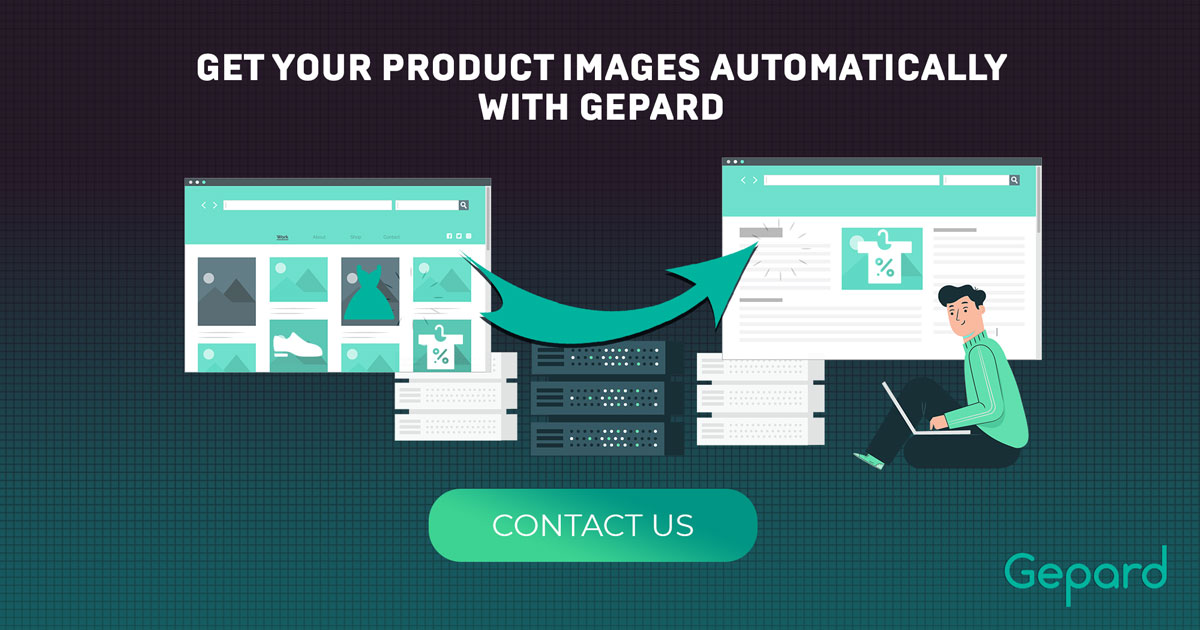How to Get Product Images for eCommerce Website?
Nowadays, eCommerce images have become an important subject of attention for retailers & brands. In the digitalization era, it’s tough to know whether you can copy certain content or whether it is better to create your own. Besides the difficulties of where to get images, eCommere businesses also struggle with delivery issues that result in spending more time on routine work rather than improving sales performance.
To clarify the image dilemma, we’ll cover the questions of where to get product images for eCommerce website, how to adapt these pictures to the most popular marketplaces and keep them regularly updated automatically.
What are eCommerce Product Images?
How to Get Product Images for my eCommerce Website?
Answering the question of how to get product pictures for website you have pretty a lot of options that you can choose from. Let’s explore the most popular ones.
- Brands & suppliers. This is the most trusted and legally safe source for getting eCommerce product images. The main problem here arises when you need to spend lots of hours on image pickup. The best way to save time here is to automate image delivery from your brands/suppliers with the help of a specific solution.
- Content providers. These service providers serve as a database with all product information including texts, images, videos, specifications, etc. There is truly plenty of useful data you need, but the main issue retailers usually struggle with is the complicated process of receiving the data from content providers and adapting to their formats. This challenge can be solved by automating the image push through the use of tailored eCommerce solutions.
For example, Gepard PIM works with many content providers such as Icecat, TradePlace, Etilize and supports data delivery from content providers to generic eCommerce platforms and custom solutions. In other words, it offers eCommerce image management.
- Download from marketplaces. Always check whether it is allowed.
- Take pictures yourself. Get a decent camera, invest in a tripod, and set up lighting/or shoot outdoors.
- Hire a professional product image photographer. Do not forget to assign a clear task to obtain the visuals that fully reflect the brand vision & identity.
- Find product images for eCommerce site from free sources, like royalty-free stock photos.
Here are some free image stocks you can use:
There are paid sources with a bigger range of images:
Why Invest Time in eCommerce Images
Product image creation can be time-consuming, however, it brings benefits and drives sales. Here are the main reasons why images can work really well for your business.
1. Drawing attention
It’s the first thing the buyer sees. The brain processes visual information 60,000 faster than text. Especially when it comes to product pictures.
2. Showcasing products from close-to-life perspectives
The online world is tricky and, as a retailer/brand, you have a challenging task: to provide a near-brick-n-mortar shop experience using internet tools.
3. Overcoming competition
There will be dozens of similar products to yours. However, if you upgrade your items’ pics instead of using retail stock images, you will win the race.
4. Building a brand image
Can you imagine, people can remember the content of 2500 pictures with over 90 percent accuracy 72 hours after looking at them for only 10 seconds?
5. Generating more sales, and accepting fewer returns
The more precise you are — the better sales and less frustrated angry buyers.
6. Going viral on social media
Luckily, social media sales channels allow more creativity, than eCommerce platforms like Google Shopping, eBay, Amazon, and similar. Make people talk and share your content.
Each eCommerce Platform Has Its Own Image Specifications
If you already sell on Amazon/eBay/Google Shopping, etc., you may have noticed the differences in requirements and desperately try to remember all. Don’t worry, you can find general guidelines in the picture below.

If you struggle with adjusting product images for various retailers’ requirements, just contact us and we can do it automatically for you.
For some hardware products, images are less important than technical specifications. So you’d better invest resources in getting high-quality product descriptions from Сontent Service Providers (also known as content catalog providers) and share them across your channels automatically with the help of a PIM software solution tailored to your needs. PIM system can also help you manage images for your products in a single place and save you from the hassle of tedious manual work. Check our recent eBook “What is PIM Now?” to learn more about it.
Product Images Best Practices 2024
1. Start with a background. Pay attention to the difference in colors of the product itself and the background. They shouldn’t blend. The background should rather be an “intensifier” for a product.
2. Reach 3D effect. Add shades to make it look real and 3 dimensional. Experiment with different kinds of shades to make it feel alive. Or, make it move!
3. Play with colors. Fancy trying something outstanding? Experiment with bright colors, patterns, and structures.
4. Design a catchy layout. Flatlay is another trend in product photography you couldn’t have missed. Especially, if your target persona is a Millennial or a Gen Z individual, consuming only aesthetically pleasant content.
5. Stick to one style in all of your products. Make them work together, not compete. Add zoom in/zoom out option. This allows for better viewing of the structure of a product’s material; certain tiny parts, etc.
6. Set up automated image export/import. Shooting and designing eye-catching visuals is not enough anymore in the fast-paced eCommerce world. Both brands and retailers nowadays have challenges with exchanging images & rich media and to solve this problem automated PIM solutions come in handy.
Automated eCommerce Image Management With Gepard
If you operate a large number of products, you may have faced difficulties keeping your product data up-to-date and easily accessible for all eCommerce team members. Here Gepard PIM & Syndicator can become a solution for storing, adapting, and distributing eCommerce images.
Our platform is already connected with various CSPs (Catalog Service Providers), which serve as a database for items’ images, descriptions, videos, and other product-related content. Save your time and don’t be bothered by trying to figure out if you’re keeping up with copyright law while using retail stock images.
If you’re interested in knowing more about why companies like Amazon, GS1, HP, Dell, Rakuten, Elkjop, Lazada have chosen to work with Gepard, feel free to fill out the contact form here.












